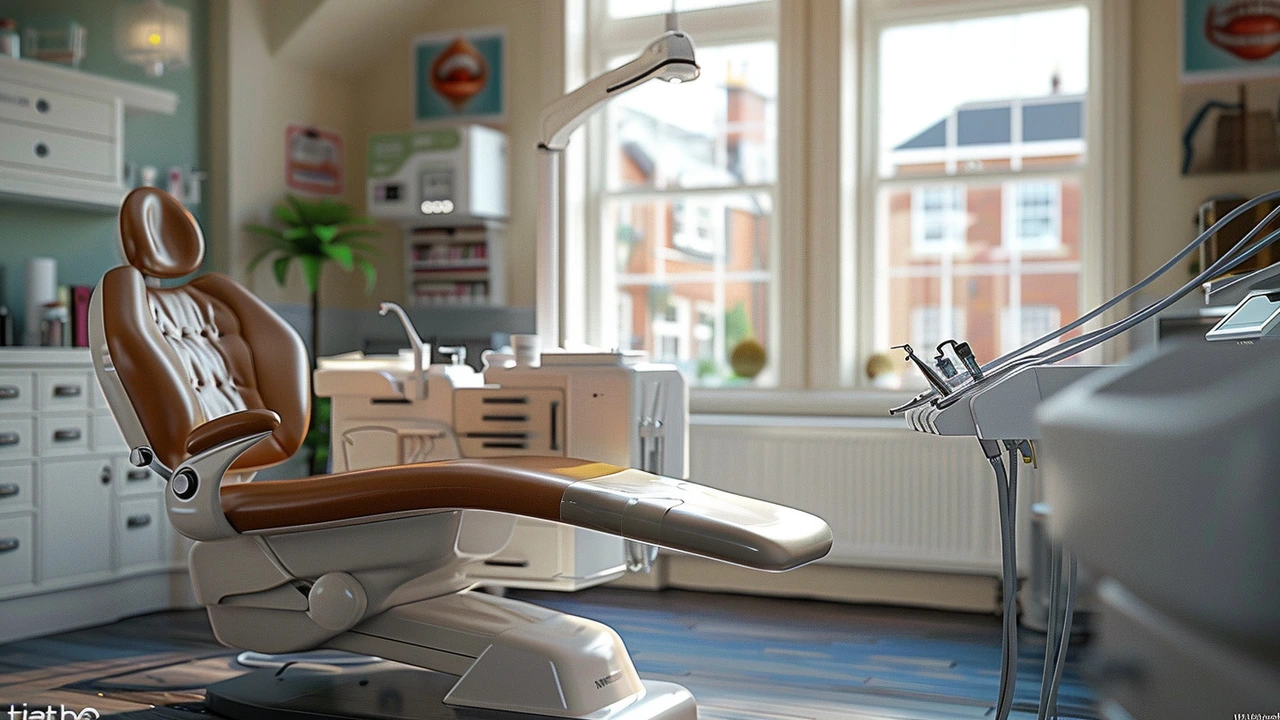
Tooth extraction is a procedure that involves removing a tooth from its socket in the bone. This might sound alarming, but it's quite a routine practice in the world of dental care. Various factors, like severe decay, infection, or misalignment, can necessitate this procedure.
In this article, we'll unravel the reasons behind tooth extractions, how to gear up for one, what the actual process looks like, and some handy recovery tips. Plus, we'll delve into some intriguing trivia about dental health that might just surprise you.
- Introduction to Tooth Extraction
- Reasons for Tooth Extraction
- Preparing for the Procedure
- The Extraction Process
- Recovery and Aftercare
Introduction to Tooth Extraction
When it comes to dental procedures, tooth extraction is one of the most common yet misunderstood treatments. So, what exactly is a tooth extraction? Well, it involves removing a tooth from its socket in the bone. This might sound unsettling, but it's a routine practice that dentists perform to maintain the overall health of your mouth.
Contrary to some beliefs, tooth extraction isn't a drastic measure taken without reason. There are specific conditions under which a dentist might recommend this procedure. For instance, severe tooth decay that's irreparable, gum disease causing the teeth to become loose, or even preparing your mouth for braces can call for an extraction.
Let's talk about pain management, because many worry that tooth extraction might be painful. Dentists use a local anesthetic to numb the area around the tooth to be removed. This ensures that the procedure is pain-free. In certain cases where the extraction is more complex, a general anesthetic might be used to put the patient to sleep. The careful use of anesthetics is key to a smooth and relatively painless procedure.
Some might ask, what happens to the empty space left behind by the extracted tooth? Often, dentists will recommend options like dental implants or bridges to fill the gap. This not only restores the appearance of your smile but also ensures that your remaining teeth do not shift out of place.
For a bit of history, tooth extraction has been around for centuries. In ancient times, it was performed to alleviate pain from infected teeth long before modern dentistry techniques were developed. Thankfully, with today's advancements, tooth extraction is now more controlled and less daunting than it was in the past.
It's also worth noting that regular dental check-ups can help detect problems early on, potentially avoiding the need for tooth extraction. Dentists employ various methods to maintain dental health and salvage a tooth if it's safe to do so. This reinforces the importance of not skipping those bi-annual dental visits.
Dr. John Smith, a renowned dentist, once said,
"Tooth extraction is often considered a last resort. With modern dentistry, our goal is to preserve natural teeth whenever possible."This speaks volumes about the commitment of dental professionals to overall oral health.
In the end, understanding the basics of tooth extraction demystifies the process. It's a testament to how far dental science has come in ensuring that even necessary surgeries are approached with care, precision, and the patient's well-being in mind.
Reasons for Tooth Extraction
Tooth extraction is sometimes necessary due to a wide array of dental issues. One of the most common reasons for extracting a tooth is severe dental decay. When a cavity becomes too large and deep to treat with a filling or even a crown, removal might be the best solution to prevent further damage and pain. Infections are another frequent cause. If an infection reaches deep into the pulp of the tooth, and root canal therapy isn't feasible or has failed, dentists often decide to remove the tooth to stop the infection from spreading.
Another reason is overcrowding. This is especially true for orthodontic treatment, where crowded teeth might need extraction to make space for proper alignment. Wisdom teeth, or third molars, are often culprits here. They can erupt at odd angles, get stuck (impacted), or push against other teeth, leading to pain or dental misalignment. Removing these molars can relieve discomfort and help maintain a straight smile.
Periodontal disease, a serious infection of the gums and the structures nearby, can also necessitate tooth removal. This condition can cause significant bone loss around the teeth, making them loose. Extraction might be required to preserve the health of surrounding teeth and prevent the spread of infection. Trauma and injury are also reasons for extraction. If a tooth is severely damaged due to an accident and can't be saved with restorative dental procedures, removal is often the best option to avoid complications.
Interestingly, some preemptive removals are based on preventive measures. For instance, people undergoing chemotherapy or organ transplants might have teeth extracted to avoid oral health problems during their treatment, since these medical procedures can compromise the body's ability to fight infections.
According to the American Dental Association, "
In spite of improvements in dental care, millions of people suffer tooth loss—mostly due to tooth decay, periodontal disease, or injury, even today." This highlights the ongoing relevance of extractions as part of comprehensive dental care.

Preparing for the Procedure
When you're gearing up for a tooth extraction, a bit of preparation can make a world of difference in how smoothly everything goes. The first thing to do is to ensure you have a comprehensive discussion with your dentist or oral surgeon. They will guide you through what to expect, potential risks, and the aftercare required. If you have any lingering questions, it's the perfect time to ask.
Before the procedure, it's crucial to provide your dental professional with your complete medical history, including any underlying health conditions or medications you're currently taking. This information can be critical in preventing complications. For instance, if you're on blood thinners, your dentist might give you specific instructions since these can affect clotting.
Dietary adjustments are also part of the preparation. Usually, you'll need to avoid eating or drinking for a certain period before the extraction, especially if you'll be undergoing anesthesia. Stick to the guidelines provided by your dentist. Eating too close to the procedure can increase the risk of complications during surgery.
Mental preparation shouldn't be overlooked either. Dental procedures can be anxiety-inducing for many. Some find it helpful to practice relaxation techniques such as deep breathing or meditation in the days leading up to their appointment. Keeping yourself calm and composed can positively impact how your body responds to the procedure.
It's wise to arrange for post-procedure support as well. This includes someone to drive you home, particularly if you've had sedation or anesthesia. Since you may experience discomfort or drowsiness afterward, having someone around for assistance can ensure a safer and more comfortable recovery.
It’s also good practice to prepare your home for the recovery period. Stock up on soft foods such as soups, yogurts, and mashed potatoes. Hard, spicy, or hot foods should be avoided as they can aggravate the area and delay healing. Make sure you have over-the-counter pain relief and any prescribed medications on hand so you don't have to make a pharmacy run when you should be resting.
| Step | Preparation Task |
|---|---|
| 1 | Discuss details with your dentist |
| 2 | Share complete medical history |
| 3 | Follow dietary restrictions |
| 4 | Practice relaxation techniques |
| 5 | Arrange for post-procedure support |
| 6 | Prepare your home for recovery |
Being meticulous in your preparation can make all the difference. And remember, don't hesitate to reach out to your dental office with any last-minute concerns. Taking these steps will help ensure that your tooth extraction is as smooth and stress-free as possible.
The Extraction Process
Tooth extraction might seem a bit daunting, but understanding the process can help ease some of the anxiety. The procedure is typically performed by a dentist or an oral surgeon, depending on the complexity of the extraction. The entire process usually begins with a thorough examination of the affected tooth and surrounding area. X-rays might be taken to get a better view of the tooth's position and the health of the surrounding bone and tissues.
Before the extraction starts, the area around the tooth is numbed using local anesthesia to ensure that you don't feel pain during the procedure. If you're particularly anxious or if the extraction is expected to be complicated, your dentist may offer sedation options to help you relax. Once you're comfortable, the dentist will proceed to remove the tooth. In a simple extraction, which is commonly performed on visible teeth, the dentist uses an instrument called an elevator to loosen the tooth and forceps to remove it from the socket.
For more complex cases, such as impacted teeth that haven't erupted properly, a surgical extraction is necessary. In these instances, the dentist might need to make an incision in the gum to access the tooth. A quote from the American Dental Association states,
"In some cases, a tooth may need to be sectioned – split into smaller pieces – to make the removal less traumatic for the surrounding tissue."These situations often arise with wisdom teeth or teeth that have broken at the gum line.
During the extraction, it's crucial to be still and follow any instructions the dentist gives you. You might feel pressure as the dentist works, but you shouldn't experience pain due to the anesthesia. Once the tooth is removed, the socket is cleaned and may be stitched, particularly in surgical extractions, to promote healing. A piece of gauze is then placed over the socket to help control bleeding and encourage a blood clot to form. This clot is essential for protecting the underlying bone and nerve endings as they heal, so taking care to protect it post-extraction is vital.

Recovery and Aftercare
Once the tooth extraction procedure is done, the journey to recovery begins. This phase is crucial for ensuring that the healing process is smooth and free from complications. Do not underestimate the importance of proper aftercare, as it can significantly impact your comfort and the speed of healing. Immediately following the extraction, your dentist will place a gauze pad over the extraction site to control bleeding. It is important to bite down gently but firmly on the gauze to help form a blood clot. Change the gauze as instructed, typically every 30 to 45 minutes, until the bleeding subsides.
During the first 24 hours, it's vital to rest and avoid physical activities. Strenuous exercises can increase blood pressure, leading to more bleeding from the extraction site. Keep your head elevated when lying down to help reduce swelling. Applying an ice pack on the outside of your mouth, over the extraction area, can help with swelling. Apply the ice pack for 15 minutes on and then 15 minutes off during the first day.
Maintaining a soft diet for the first few days is another key point. Foods like yogurt, applesauce, mashed potatoes, and smoothies are excellent choices. Avoid hot, spicy, and crunchy foods that might irritate the extraction site. Make sure to stay hydrated, but avoid using straws as the sucking motion can dislodge the blood clot, leading to what is known as a dry socket.
Pain Management
Experiencing pain and discomfort after a tooth extraction is completely normal. Your dentist will likely prescribe pain relievers or recommend over-the-counter pain medications. Always follow the prescribed dosage instructions. If you prefer natural remedies, clove oil has been known to provide some relief. Just dab a small amount on a cotton ball and gently apply it to the affected area.
“After having a tooth pulled, it’s crucial to stick to your dentist’s aftercare advice to avoid complications. Proper care can make the difference between an ongoing problem and a smooth recovery.” — Dr. Emily Tanner, Dental Surgeon
Oral hygiene plays a significant role in the recovery process. You should avoid brushing directly on the extraction site for the first few days. Instead, gently rinse your mouth with a saltwater solution (1 teaspoon of salt in an 8-ounce glass of warm water) a few times a day, especially after meals, to keep the area clean and aid in healing. Be cautious not to spit forcefully as this can disturb the clot.
Signs of Complications
While most extractions heal without any issues, it’s vital to recognize signs that might indicate complications. If you experience increased pain after a few days, prolonged bleeding, or a foul taste in your mouth, contact your dentist promptly. These symptoms could signify an infection or a dry socket, both of which need immediate attention.
Swelling and bruising can be expected, but if they persist beyond a few days or are accompanied by fever, it's wise to get a follow-up check. Proper recovery and aftercare not only help in healing but also prevent further dental issues, ensuring your mouth remains healthy.
Write a comment
More Articles

Dental tartar under the gums: how to remove it and what are the experiences
Hey there, it’s your friendly neighborhood blogger here! Today we're going to talk all about dental tartar under the gums, a problem that many of us face. Specifically, we'll delve into ways of removing it and shed light on personal experiences that individuals have had with it. Remember, maintaining oral hygiene could save us a lot of trouble down the line! Tune in as we tackle this significant issue that's more prevalent than you think!

Veneers on front teeth: What are the long-term results?
Hi there, in this post, we're going to take a deep dive into the world of dental veneers, specifically focusing on front teeth. We'll carefully examine the long-term results, which is essential as it's not a decision to be taken lightly. Curious about how they’ll change your smile over the long run? Stick around - we're about to talk all things dental health and more!

What to do with gum inflammation?
Hey there, ladies! Gearing up to tackle gum inflammation? Let me share some speedy and simple solutions right here on this post. From improving your oral hygiene routine to home remedies, we're going to dive deep into the wonderful world of gum care. You'll learn how to nip gum diseases in the bud before they become an unbearable pain in the... mouth. Stay tuned as we turn this sour experience into a sweet victory for your smile!


